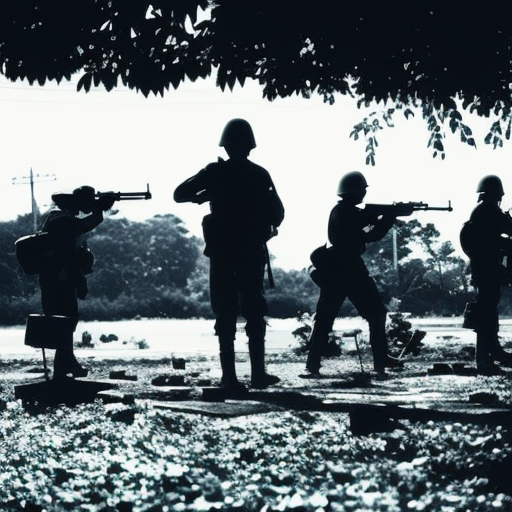The Vietnam War: A Comprehensive Summary
The Vietnam War was a prolonged conflict that took place from 1955 to 1975, primarily between North Vietnam, supported by its communist allies, and South Vietnam, backed by the United States and other anti-communist nations. The war was a direct result of the Cold War tensions between the United States and the Soviet Union, with Vietnam serving as a battleground for their ideological struggle.
Causes of the Vietnam War
The roots of the Vietnam War can be traced back to the early 20th century when Vietnam was under French colonial rule. The desire for independence led to the formation of nationalist movements, such as the Viet Minh, led by Ho Chi Minh. After the defeat of the French at the Battle of Dien Bien Phu in 1954, Vietnam was divided into North and South along the 17th parallel, with Ho Chi Minh leading the communist North and Ngo Dinh Diem leading the anti-communist South.
The Escalation of the Conflict
The United States became increasingly involved in Vietnam in the 1960s. Initially, American involvement was limited to providing military advisors and economic aid to South Vietnam. However, as the communist insurgency in the South intensified, the U.S. gradually escalated its military presence. In 1964, the Gulf of Tonkin incident, where U.S. naval vessels were allegedly attacked by North Vietnamese forces, led to the passage of the Gulf of Tonkin Resolution, which gave President Lyndon B. Johnson broad powers to use military force in Vietnam.
The Tactics and Strategies
The Vietnam War was characterized by guerrilla warfare and unconventional tactics employed by both sides. The North Vietnamese and Viet Cong forces used hit-and-run tactics, ambushes, and booby traps to target American and South Vietnamese forces. The U.S. responded with a combination of conventional warfare, including search-and-destroy missions and aerial bombardment, as well as the controversial use of chemical defoliants like Agent Orange.
The Anti-War Movement
The Vietnam War sparked a significant anti-war movement in the United States. Opposition to the war grew as the conflict dragged on and the number of American casualties increased. Protests, marches, and acts of civil disobedience became common, with many Americans questioning the moral and strategic justifications for the war. The anti-war sentiment eventually led to a shift in public opinion and influenced the decision to withdraw U.S. troops from Vietnam.
The Tet Offensive and Turning Point
In 1968, the North Vietnamese and Viet Cong launched a massive coordinated attack known as the Tet Offensive. Although the offensive was ultimately repelled by U.S. and South Vietnamese forces, it had a significant psychological impact on the American public. The Tet Offensive shattered the perception that the U.S. was winning the war and eroded support for continued military involvement in Vietnam.
The Paris Peace Accords and the End of the War
Negotiations to end the war began in 1968 and culminated in the signing of the Paris Peace Accords in 1973. Under the agreement, the U.S. agreed to withdraw its troops from Vietnam, while North Vietnam released American prisoners of war. However, the peace was short-lived, as fighting between North and South Vietnam resumed in 1975. In April of that year, Saigon, the capital of South Vietnam, fell to the North Vietnamese forces, effectively ending the war.
Legacy and Impact
The Vietnam War had a profound impact on both Vietnam and the United States. In Vietnam, the war resulted in the reunification of the country under communist rule. The conflict also left a lasting legacy of environmental devastation, with extensive damage caused by the use of chemical weapons. In the United States, the war led to a reassessment of foreign policy and a shift in public opinion regarding military intervention. The Vietnam War remains a controversial and divisive chapter in history, with its effects still felt today.












